History
 St Boniface Missionary College was founded in 1860 by the Vicar of Warminster, James Erasmus Philipps (right), an energetic man of great imagination whose family had long had an interest in missionary work. Upon the death of his father he became the 12th Baronet but, although having an aristocratic background and good family connections, he was very hard up with only his stipend to support a large family.
St Boniface Missionary College was founded in 1860 by the Vicar of Warminster, James Erasmus Philipps (right), an energetic man of great imagination whose family had long had an interest in missionary work. Upon the death of his father he became the 12th Baronet but, although having an aristocratic background and good family connections, he was very hard up with only his stipend to support a large family.
However during his incumbency from 1859 to 1897 he established or built a great number of institutions including Warminster Mission House later called St Boniface Missionary College, The Community of St Denys (St Denys Convent), St Monica’s School for girls, the Cottage Hospital, St Johns Church and St Johns School, an orphanage for boys and an orphanage for girls. He also virtually rebuilt the Minster church in 1889.
There a small book written about 1900 which says
“There has been scarcely an institution in the town worth of support but what he has taken a keen interest in, and promoted its welfare. For nearly 30 years he has been chaplain to 1st Wiltshire Rifle Volunteers and is frequently on parade at 6.00 in the morning, he is President of the Garden Society, a Member of the Local Authority and has caused much money to be spent in the town”.
New buildings for the Missionary College were opened between 1899 and 1901 with a later block and chapel added a few years later.
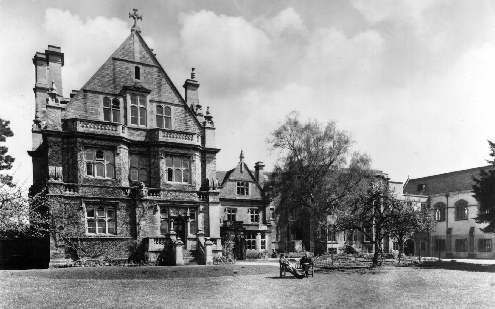
West View
The College closed for the duration of the First World War and again in 1941 for the same reason. However, in 1945, an Archbishops’ Commission on Training for the Ministry recommended that there should be no missionary colleges as such and the buildings were used as an emergency college for training school teachers by Salisbury Diocesan Training College.
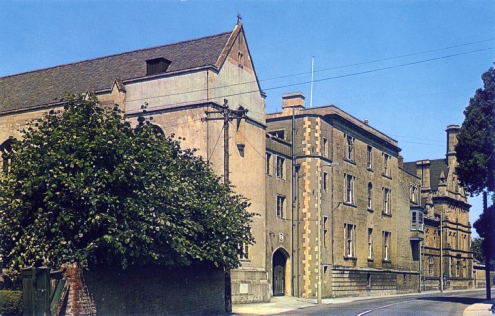
Main buildings, Warminster
 At this time Eric Abbott (right) as Dean of King’s College, London was looking for suitable premises outside the capital to accommodate students for a proposed post-graduate year of residence with a consequent lengthening of its course from three to four years - an idea which had been forming in his mind for some time.
At this time Eric Abbott (right) as Dean of King’s College, London was looking for suitable premises outside the capital to accommodate students for a proposed post-graduate year of residence with a consequent lengthening of its course from three to four years - an idea which had been forming in his mind for some time.
A lease at St Boniface College was agreed upon and, in 1948, it was licensed.
Sydney Evans was appointed Warden and John Townroe, Chaplain.
It ran until 1969 with John Townroe taking the responsibility of Warden in 1956.
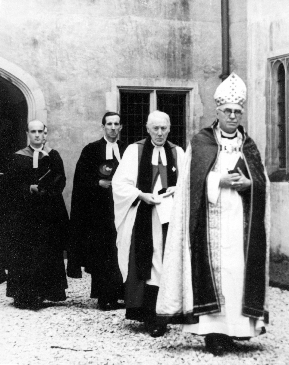
Warden installation
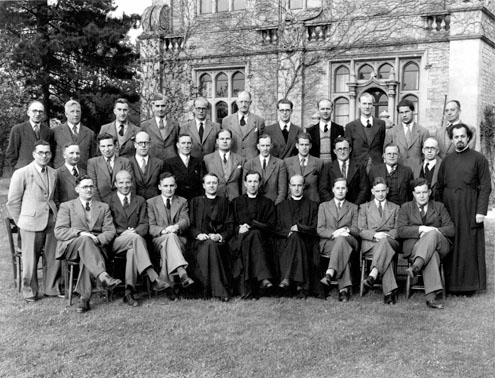
Pioneers 1949
A steep decline in the number of ordinands brought both the future of certain theological colleges and revision of the BD syllabus into sharp focus. It was felt at the time that a unity of theoretical and practical study of theology in an open; college environment would be desirable - and in larger colleges. Thus the 21 years of King’s College London’s fourth-year venture came to an end and the course was moved to St Augustine’s Canterbury.
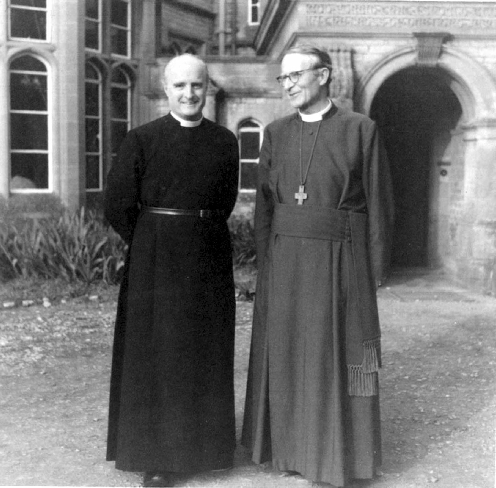
John Townroe and Bishop Joe Fison
Upon King’s withdrawal from St Boniface, the nearby Lord Weymouth Grammar School leased the college buildings from the St Boniface Trustees, as an extension to the school.
A charity was established to
“advance the Christian Religion in accordance with the principles of the Anglican faith in all parts of the world, especially for the provision of education and training of clergy and lay people by the award of scholarships and maintenance allowance or any purpose concerning their spiritual or temporal welfare”.
Income is derived mainly from school rent and investments. From this the Trustees are able to make grants and attempt to allocate at least half of these to training institutions and dioceses overseas, thus ensuring that the College’s original worldwide objects of mission continue to be met.
